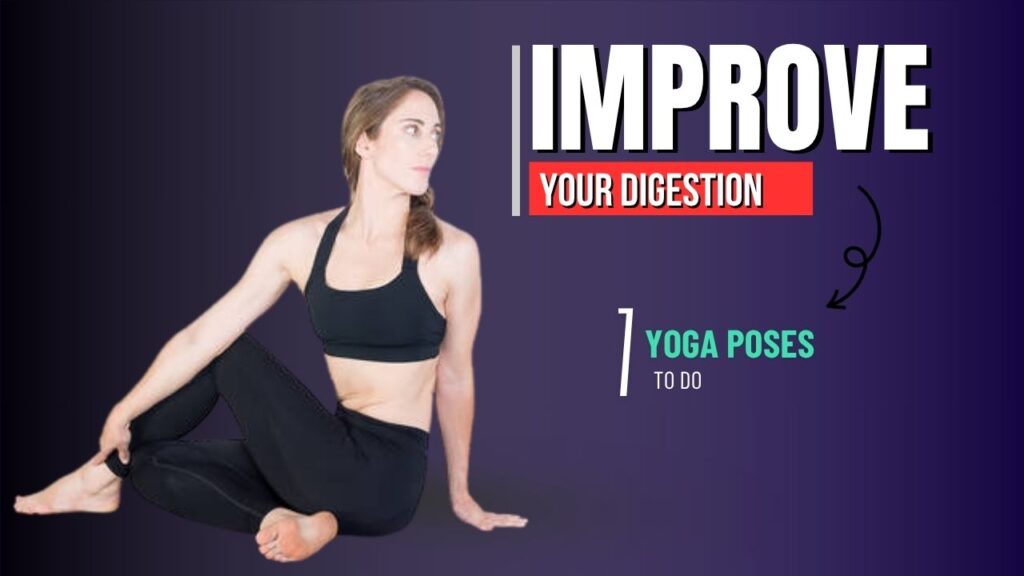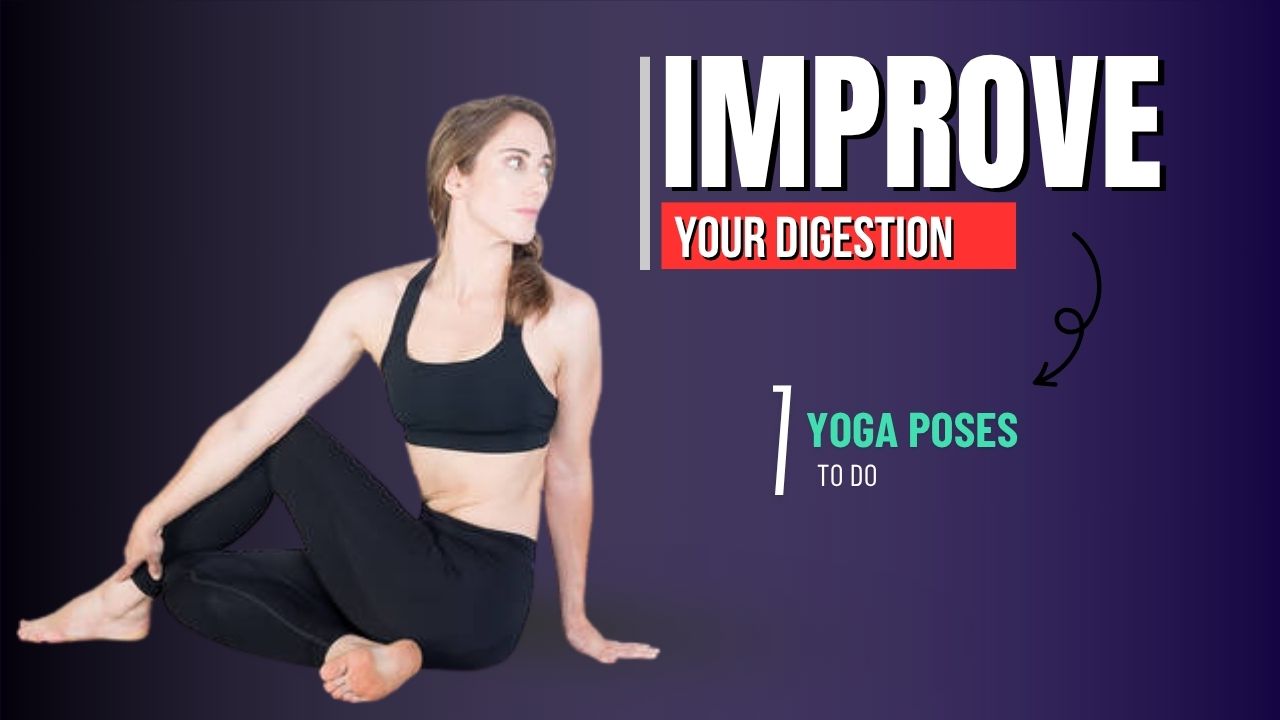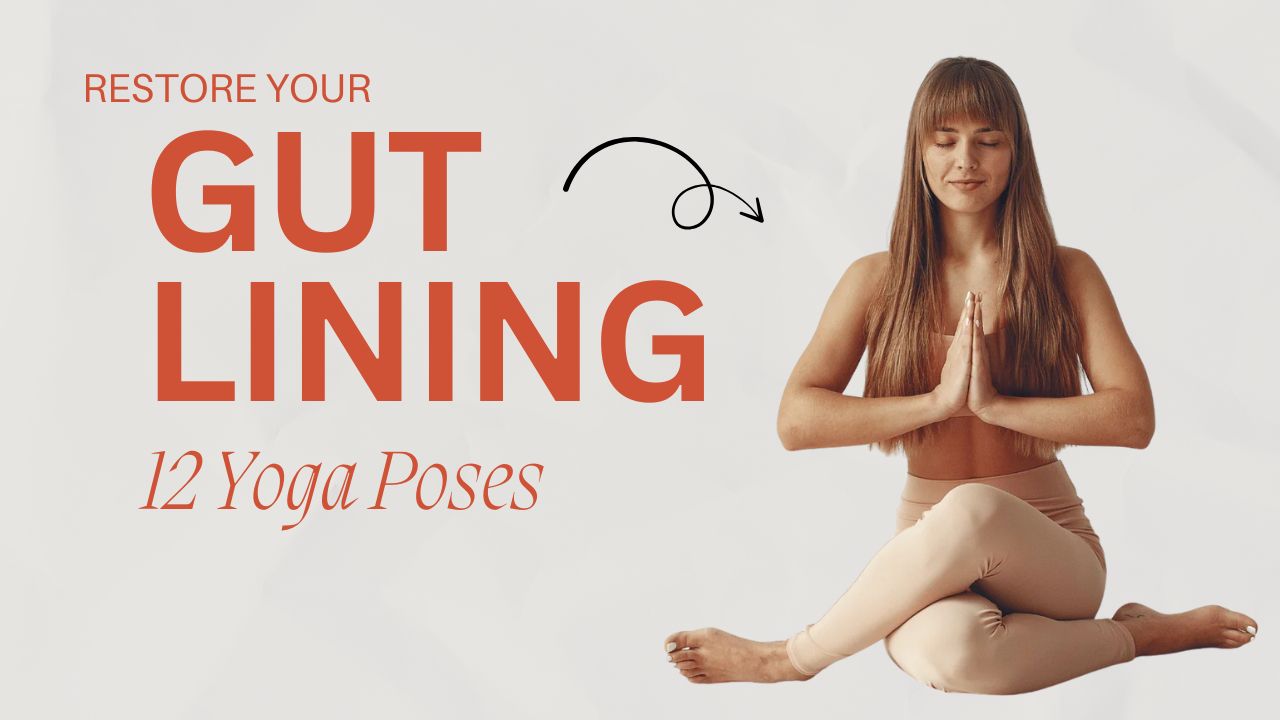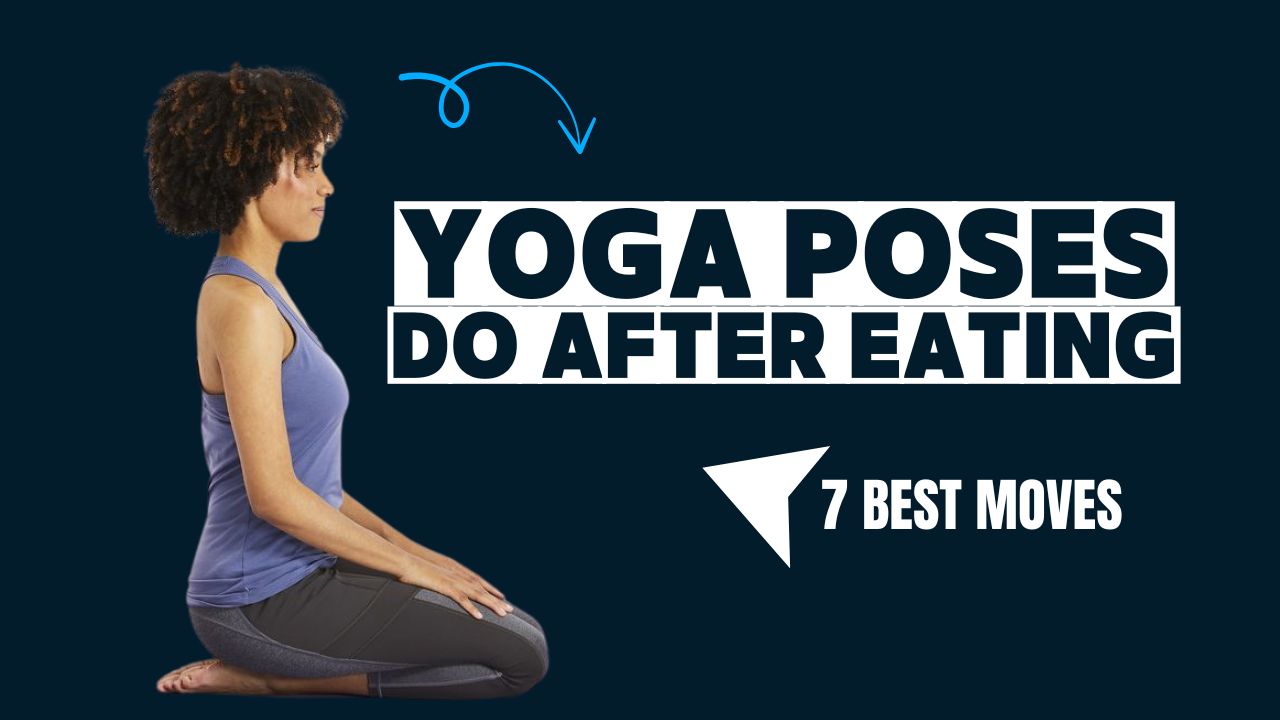Do you know your gut is often referred to as your “second brain”?
With over 100 million neurons lining your gastrointestinal tract, your digestive health plays a powerful role not just in how you process food, but also in your mood, immunity, and energy levels.
Yet, poor posture, high stress, and a sedentary lifestyle can disrupt your digestive system, leading to bloating, sluggishness, and discomfort.
That’s where yoga steps in—not just for flexibility or relaxation, but as a natural tool to stimulate, stretch, and massage your digestive organs.
In this post, you’ll discover 7 effective yoga poses that gently work on your abdominal region, stimulating peristalsis (the movement of food through the intestines), reducing gas, and easing bloating. Each pose is paired with clear “how-to” instructions so you can safely practice them at home—even if you’re a beginner.
Let’s start your journey to a healthier gut, one pose at a time.

Table of Contents
What Can Happen After 30 Days of Practicing These Yoga Poses
| Positive Changes | Explanation |
|---|---|
| Reduced bloating and gas | Regular abdominal massages through yoga stimulate digestion and relieve buildup. |
| Improved bowel movements | Twisting and forward-folding poses encourage smoother elimination. |
| Enhanced core strength and flexibility | Repeated engagement of the abdominal area builds muscle tone and flexibility. |
| Better posture and spinal alignment | Poses like Cat-Cow and Bridge improve posture, aiding digestive organ function. |
| Lower stress and anxiety levels | Deep breathing and relaxation help regulate the nervous system and digestion. |
| Improved sleep quality | Reduced discomfort and a calmer nervous system promote better rest. |
| Increased body awareness and mindfulness | Consistent practice connects mind to body, improving overall wellness. |
Do’s and Don’ts for Practicing Yoga to Improve Digestion
| Do’s | Don’ts |
|---|---|
| Practice on an empty stomach or at least 2–3 hours after eating. | Don’t force yourself into any pose—listen to your body. |
| Focus on slow, deep, and mindful breathing during each pose. | Don’t rush through poses without holding them long enough to be effective. |
| Use props like yoga blocks or cushions for added support. | Don’t hold your breath while twisting or stretching the abdominal area. |
| Wear comfortable, stretchable clothing that doesn’t restrict movement. | Don’t practice immediately after heavy meals or during stomach discomfort. |
| Maintain a regular practice for long-term digestive benefits. | Don’t expect instant results or use yoga as a sole solution for serious digestive issues. |
| Hydrate well before or after your session (not during). | Don’t compare your flexibility with others—go at your own pace. |
| End with a relaxation pose to calm your nervous system. | Don’t skip warm-up or cool-down, even for short sessions. |
7 Yoga Poses To Improve Digestion
1. Seated Spinal Twist (Ardha Matsyendrasana)
Stimulates digestive fire and detoxifies organs
How to Do It:
- Sit with both legs extended in front of you.
- Bend your right knee and place your foot flat on the floor outside your left thigh.
- Place your right hand behind you and your left elbow outside your right knee.
- Inhale to lengthen the spine, exhale to twist deeper.
- Hold for 30 seconds to 1 minute. Switch sides.
Why It Helps:
Twisting poses wring out the abdominal organs—like squeezing a sponge—enhancing blood flow and supporting liver and kidney function.
2. Wind-Relieving Pose (Pawanmuktasana)
Relieves gas and bloating
How to Do It:
- Lie on your back and draw your knees to your chest.
- Hug them gently and lift your head to bring your nose towards your knees.
- Hold for 30–60 seconds, breathing deeply.
- Release and repeat 2–3 times.
Interesting Fact:
This pose is named after its ability to release trapped gas—an age-old natural remedy practiced in traditional Indian households.
3. Cat-Cow Pose (Marjaryasana-Bitilasana)
Boosts circulation and gut mobility
How to Do It:
- Come onto all fours in a tabletop position.
- Inhale, arch your back and lift your head and tailbone (Cow).
- Exhale, round your spine, tucking the chin and pelvis (Cat).
- Continue for 1–2 minutes in a slow, rhythmic flow.
Why It Helps:
The back-and-forth movement gently massages the abdominal area while reducing stress and enhancing spinal flexibility—both important for digestion.
4. Supine Twist (Supta Matsyendrasana)
Stimulates liver, kidneys, and intestines
How to Do It:
- Lie on your back, arms outstretched in a T shape.
- Bend your knees and let them drop to the right as your head turns left.
- Keep your shoulders grounded.
- Hold for 1–2 minutes, then switch sides.
Did You Know?
Gentle spinal twists like this not only aid digestion but also help cleanse the internal organs through better lymphatic drainage.
5. Bridge Pose (Setu Bandhasana)
Activates abdominal muscles and soothes the nervous system
How to Do It:
- Lie on your back with knees bent, feet hip-width apart.
- Press into your feet to lift your hips.
- Clasp your hands under your back and press down through your arms.
- Hold for 30 seconds to 1 minute, then release.
Why It Helps:
By lifting the pelvis, this pose increases circulation to the digestive organs and reduces tension in the lower back—a key area linked to digestive stress.
6. Child’s Pose (Balasana)
Relieves abdominal tension and promotes relaxation
How to Do It:
- Kneel and sit back on your heels.
- Fold forward, extending your arms or letting them rest by your sides.
- Let your forehead touch the floor.
- Stay here for 1–3 minutes, breathing slowly.
Myth Buster:
Many believe rest poses like Balasana are only for cooldowns, but they actually enhance digestion by triggering the parasympathetic nervous system—the body’s “rest and digest” mode.
7. Downward-Facing Dog (Adho Mukha Svanasana)
Improves blood flow and stretches abdominal wall
How to Do It:
- Start in a tabletop position.
- Tuck your toes, lift your hips upward to form an inverted V-shape.
- Keep your spine long, heels pressing toward the floor.
- Stay for 1–2 minutes, focusing on deep breathing.
Why It Helps:
This inversion boosts circulation to the abdominal organs while also relieving stress—a major disruptor of healthy digestion.
Final Thoughts
Digestive discomfort isn’t just about what you eat—it’s also about how you move.
Incorporating just 10–15 minutes of these yoga poses into your daily routine can naturally enhance digestion, reduce bloating, and bring calm to your belly and mind.
Remember, the key is consistency and breath awareness.
These poses are not quick fixes but gentle nudges to bring your digestive system back into harmony.
Frequently Asked Questions (FAQs)
How often should I practice these yoga poses for better digestion?
You can practice these poses daily or at least 3–4 times a week. Consistency is key to seeing noticeable improvements in digestion and abdominal comfort.
When is the best time to do yoga for digestion?
It’s ideal to practice these poses on an empty stomach or at least 2–3 hours after a meal. Early morning or late evening (before bedtime) works best for gentle digestive stimulation.
Can yoga really help with gas and bloating?
Yes. Certain yoga poses, like Wind-Relieving Pose and Seated Twist, are specifically designed to release trapped gas, relieve bloating, and stimulate the digestive tract.
Are these poses safe for beginners?
Absolutely. All the listed poses are beginner-friendly and require no advanced flexibility. Just move slowly, listen to your body, and focus on your breath.
How long should I hold each yoga pose?
Hold each pose for 30 seconds to 1 minute, or longer if it feels comfortable. You can repeat poses like Cat-Cow or Wind-Relieving Pose 2–3 times for maximum benefit.
Can these yoga poses replace medication for digestion?
While yoga supports healthy digestion, it’s not a substitute for medical treatment. If you have chronic digestive issues or conditions like IBS, consult your doctor alongside practicing yoga.
What should I wear while doing digestive yoga poses?
Wear light, stretchy, and comfortable clothing that allows free movement and doesn’t compress your stomach or diaphragm.
Can I do these yoga poses right after eating?
It’s best to wait at least 2–3 hours after eating. However, gentle poses like Child’s Pose or Cat-Cow can be done 45–60 minutes after a light meal if needed.
Do I need any special equipment?
No special equipment is needed. A yoga mat and comfortable floor space are sufficient. You can use cushions or blocks for support if needed.
How soon will I see results from doing these yoga poses?
Some people experience relief from gas and bloating immediately after one session. However, long-term improvements in digestion may take a few weeks of regular practice.










